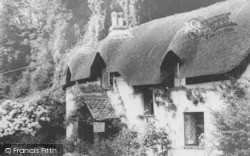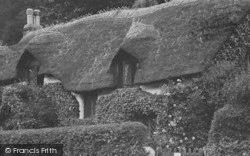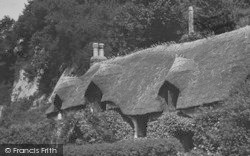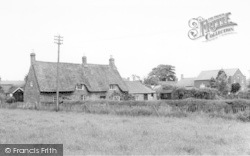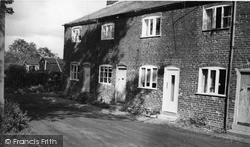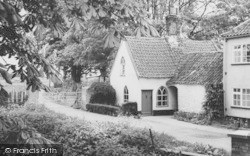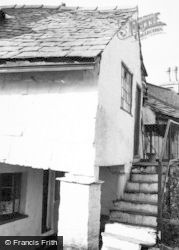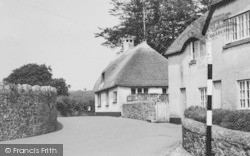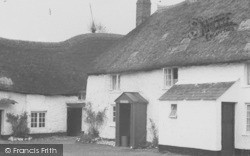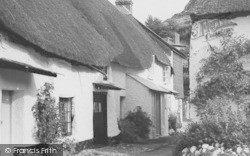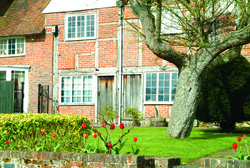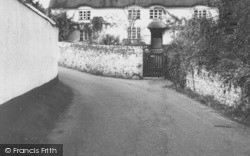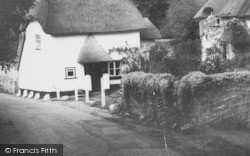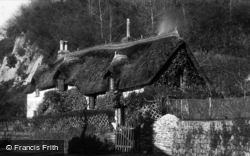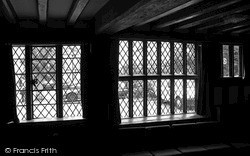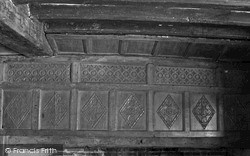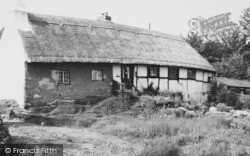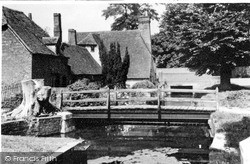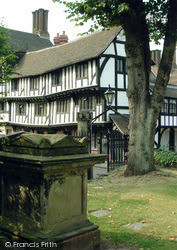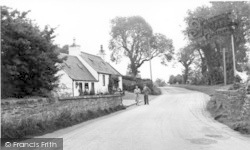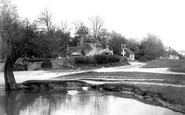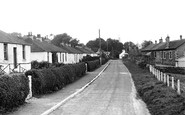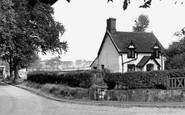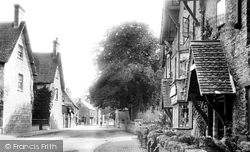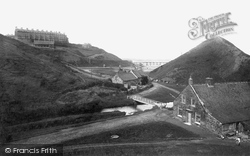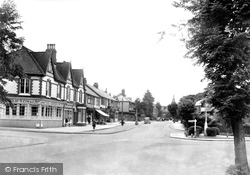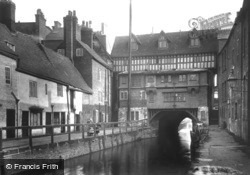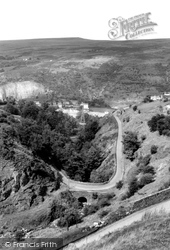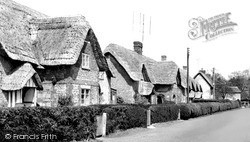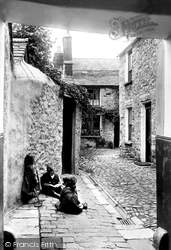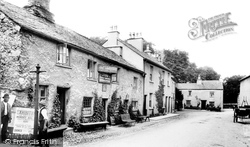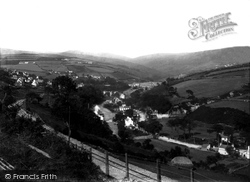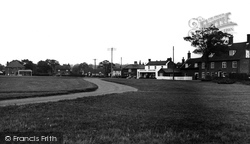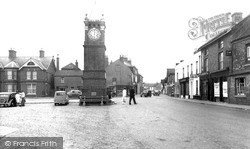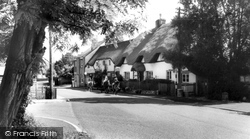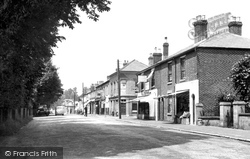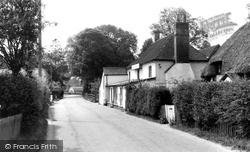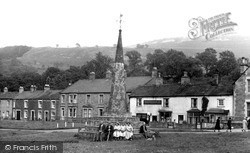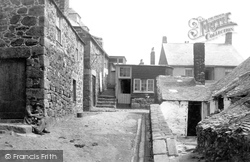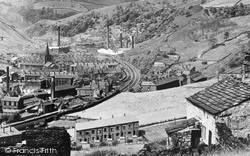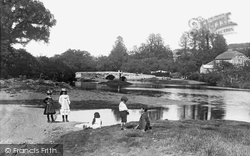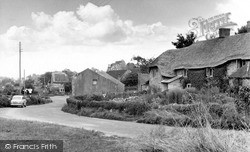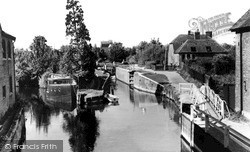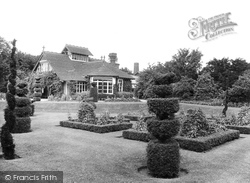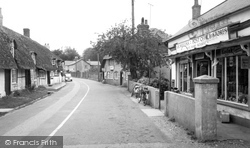Places
6 places found.
Those places high-lighted have photos. All locations may have maps, books and memories.
Photos
2,406 photos found. Showing results 661 to 680.
Maps
41 maps found.
Books
Sorry, no books were found that related to your search.
Memories
2,828 memories found. Showing results 331 to 340.
Once Upon A Time
I lived in Gate Cottage for 2 years after my parents moved there from Surrey. They moved to return to dad's home county and to be close to my uncle and aunt who lived in Holt Street, Nonington. At one time there were 10 Packers ...Read more
A memory of Frogham in 1967 by
Childhood Memories
My father, Bertram Whittingham was a native of Hemsworth, born 1892 and I am the remaining son of the family born August 1926 in a small miner's cottage located at No. 7 North View. My father was a coal miner, working at ...Read more
A memory of Hemsworth in 1930 by
Melrose Cottage 8 Shalbourne
In the 1950s and early 1960s my brother and I were fostered to a Miss Little and her sister at 8 Shalborne, there were several children living there and I have many fond memories of our stay. We used to sleep in a ...Read more
A memory of Shalbourne by
Shotton In The Forties Fifties
I was brought up in a two-up, two-down cottage at No.4, Shotton Lane. These cottages were demolished in the fifties and modern houses were built on the site. Everyone was poor and, during the war in particular, ...Read more
A memory of Shotton in 1944 by
Living In Old Cullercoates
My grandparents lived in Simpson Street and auntie in Elizabeth Street. I am wondering if anyone remembers Garden Terrace, and the old school in John Street where my grandma worked? My grandfather was killed aboard ...Read more
A memory of Cullercoats in 1965 by
Rhu
My Grandfather, Andrew Johnston, lived in Kilbride Cottage, Rhu (next to the manse on the corner) and every school holidays my mum Janet Kempton (nee Johnston) brought us up to Rhu for the holidays. Grandpa died when I was about 8, he was ...Read more
A memory of Kilcreggan in 1950 by
Nice Photo!
Is the pond still there? I remember delivering newspapers to the pub, and to other houses and cottages around the heath - by bike all the way from Moor Park shops! At least it was downhill from here - about three papers to the ...Read more
A memory of Batchworth Heath in 1958
Little Sutton Shops Chester Road
Hi ,can anyone cast their minds back to the shopping area in Little Sutton where there is a very tiny car park on the A41, the shops that are there now are Cheshire Building Society, chemist (Westminster ...Read more
A memory of Little Sutton by
Best Ice Cream
Friends of the family owned a remote cottage towards Cairnsmoor from Creetown. We holidayed from Surrey on steam-hauled trains via Carlisle to the end of the world. Sheep scratched their backs on the corner of the cottage. Brown ...Read more
A memory of Creetown in 1954 by
Memories
I used to live in Bell Lane from when my parents moved there aroudn 1960 and moved out in 1977. This corner was known as Rachel's Corner and it was said that Bell Cottage was haunted. Rachel hanged herself on a tree after her lover ...Read more
A memory of Thelwall in 1971 by
Captions
2,020 captions found. Showing results 793 to 816.
The tall terraced cottages on the right are in their simpler vernacular style, while the school and halls are Tudor in style, with stone mullioned and transomed windows.
Just below Marine Parade can be seen a house known as The Cottage but also affectionately known in the town as Teddy's Nook, a reference to visits to Saltburn by Edward, Prince of Wales
Another famous visitor to the town was Lawrence of Arabia, who frequently visited the White Cottage in the Eastgate area.
All the cottages on the left were demolished by 1910. Both sides of the water were reached by stairs from the High Street.
Near some cottages below the summit of Pen Cyrn mountain, it is just possible to make out the flat ridge on which the former Llangattock tramroad was built from the Nantyglo Ironworks to Llangattock
These cottages are just a few of around forty built around a triangular village green for the Wroughton Estate; some are known to have housed the workers at Wilcot Manor House.
With its cobbled floor and plain, harmonious stone cottages, this picturesque yard offers an authentic view of how Kendal must have looked to the Victorians.
The cottage in the centre was Ayers Old-Fashioned Eating House, which has plenty of seating outside for visitors. Note the heavy round rubble chimney above.
A number of cottages in Laxey were built by George William Dumbell, chairman of the Laxey Mining Co, for his miners and their families. He also donated land for a chapel.
Set a short distance away from the Cromer to Norwich road, Aldborough offers a spacious prospect with cottages grouped round a broad green.
Beyond the late Victorian pair, The Manse and The Villa (with the timbered gable) tower over the pair of small cottages beside them.
It was on Goodworth Clatford that a flying bomb landed, destroying the old Royal Oak, the school, the smithy and a row of cottages.
Pevsner described Netley as 'a Victorian period piece;' its streets of neat family villas and rows of renovated terraced cottages overlooking Southampton Water are certainly striking.
There are two large Georgian houses and some nicely thatched cottages. It is still a peaceful village, although there is more traffic.
take a rest on the steps, as the greystone cottages, now part of a Conservation Area, cluster around the greensward in the background.
This photograph of Lulworth village shows how Dorset cottages looked when they were the workaday homes of local labourers and fishermen.
The cottage on the left has been replaced with gardens; the wall on the right was once used as a place where slaughtered pigs were scalded and skinned.
The chimneys of the textile mills fill the valley bottom, alongside the winding railway line and grim terraces of the millworkers' cottages. Above them, the moors watch over, unchanged.
With its old cottages, stepping stones and ancient arched bridge, it possesses a unique, almost hypnotic serenity.
These cottages lie on the road down from the school, one of the first church schools in Somerset. The thatch looks so picturesque today.
Of Queen's Park's 43 acres, thirteen came from the two landowners, and a further parcel was purchased from the Earl of Crewe in 1904 to provided a park keepers' cottage, a bandstand and a
Where the lock-keeper's cottage once stood is now an attractive recreational area with seats and information boards recording the history of the canal.
This property was built for Princess Alexandra; it is a similar design to the Swiss Cottage at Osborne House.
Thatched cottages line the main street, and the village stores on the right has signs in the window for Brooke Bond Tea, as well as Kodak and Ilford photographic stock.
Places (6)
Photos (2406)
Memories (2828)
Books (0)
Maps (41)


